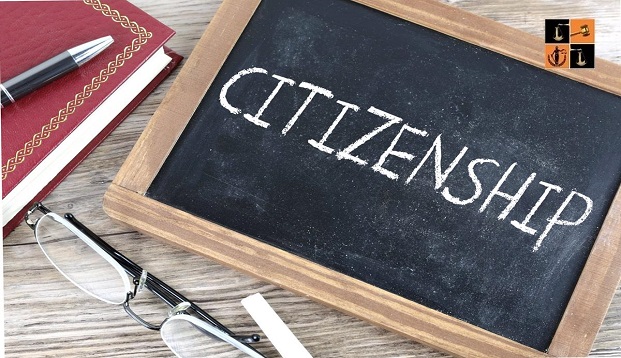
Human society and the very basic structure of social interactions have an inexplicable connection with conflicting ideas. Disagreements and contrasting thoughts shape, break down and remould civilisations and religions. In humanities tryst to reach the most idealised version of existence possible, many governments, philosophies and beliefs have been adopted only to be cyclicly rejected by the up and coming generations. The changes in flows of intellectual and moral presumptions seem the only constant in the sea of ideas that swirl to create collective human conscience. This irrefutable relation between dissent and the development of society means that we need disagreements to grow. A civilisation without diversity of thoughts is stagnant. It would take a mere cursory glance through a history textbook to see in graphic detail the inevitable collapse of cultures where dissent is suppressed. The fall of the British raj and the existence of India is a strong testament to that fact.
Protest, therefore, seems intrinsically attached to organised human society. Looking for the beauty amidst dark and grisly protests may seem in bad taste, for they are places marked with violence, suppression and jeers from those on the other side of the spectrum. A site of blood spills and lost lives, they diametrically opposed all forms of order. Better off members of society look down upon them with their indifferent scorn and brutal suppression by the authorities does its best to leave bruises that stay for much longer than their physical manifestations. Yet even amidst this gloom and despair, one must never forget that the act of rebelling against the establishment requires tremendous strength. Standing up for a cause and pushing past comfort zones and governmental dictates reflects so magnificently the tenacity and diversity of our spirit. Our ability to come together, to unite for what is right.

The winter of 19-20 in Delhi was the coldest in years. More so metaphorically than literally. Article 370 gave Kashmir its special status was dissolved and the Citizenship Amendment Bill became an act despite its discriminatory implications. It in its essence invalidated the basic principles of secularism by giving citizenship to members of all religions except Islam. Jingoism, islamophobia and hyper nationalism had set the tone of discourse and the values envisioned in the constitution which had long since begun to crumble truly showed their fissures. Alienation of minorities truly came to a head. Communalism mingled with patriotism. The freezing cold winds laced with vitriol seemed to blow unrelentingly across the very country that fought for liberty and freedom less than a century ago. Divisive like communalism which should have long been put to bed rose their ugly heads and fuelled the worst riots the national capital had seen in decades. Educational institutions were attacked. Many houses were destroyed, 53 people were killed and the chilling ruins left behind painted a very grim picture.
Yet even in the middle of the bitter and gloomy atmosphere that swallowed the nation, light could be found in the candles burning warmly along silent protests across the night. The smog clogged streets of Delhi not so much hummed as shouted the legendary verses of Iqbal Bano and Habib Jalib. The vigour of their voices, their unrelenting stance in the face of hardened lathis and bulletproof soldiers ignited a fire of strength refusing to be put out.
Steps were taken by the authorities and right-wing media to suppress and vilify the nature of the protests. Over a thousand protestors were arrested and many were attacked by the police. Flights were cancelled, metro stations were closed, traffic in the national capital came to a standstill and public gatherings were banned in many parts of the city. Fake news spread like wildfire and efforts were made to create an atmosphere of animosity and fear. Regardless, the protestors walked on rugged and beautiful in defiance of uncertainty and harsh media scrutiny. Truly living up to all those who had protested for what was right before them.

Delhi of course was the battleground of the privileged, far removed from the true horrors protestors witnessed in Kashmir and Assam. Its brilliance lay in the crowd that turned up. People of different ethnicities, age groups and identities all united in their common stand against injustice. The crowd was diverse. Ranging from young scared college students that had lied at home to the bold and fierce women of Shaheen Bagh protesting at the top of their voices. From the soft-spoken to the loudest voices, from politicians to lawyers, young children and old men with grey hair, they had all came together in a united symphony of dissent. Religious lines and diverse lives did not stop them from joining their voices for an India they still believed in. The one thing that did unite them though, was their city, they were the people of Delhi and they would not go down without a fight. They stood strong and burned bright.
As people always do when they come together. The stage may be different and so may the circumstances but the idea of dissent never is. Rebellion runs in our blood, across nations, peoples and continents. You can see it in the silent acts of defiance in even the most suffocating regimes, the mass uprisings in countries where brutality sets the administrative tone, in classrooms against dictatorial teachers and in homes against abusive parents. Humanities greatest strength after all is the desire for a better day, a happier existence and the determination to fight for it till the very end.
There is grave injustice and darkness in this world. Often protests achieve nothing but the ire of the powerful but even then, they give enough to hope. Revolutions towards the light, in search of a better future, though suppressed and stomped on, will never die down. If they do not come today, they will come tomorrow, or the day after, but they will come and bring with them the winds of change.
A History Major from Jesus and Mary College, forever fascinated by culture, history and politics. A wannabe rebel with way too many causes to yell about.



I enjoy your writing style genuinely loving this web site.